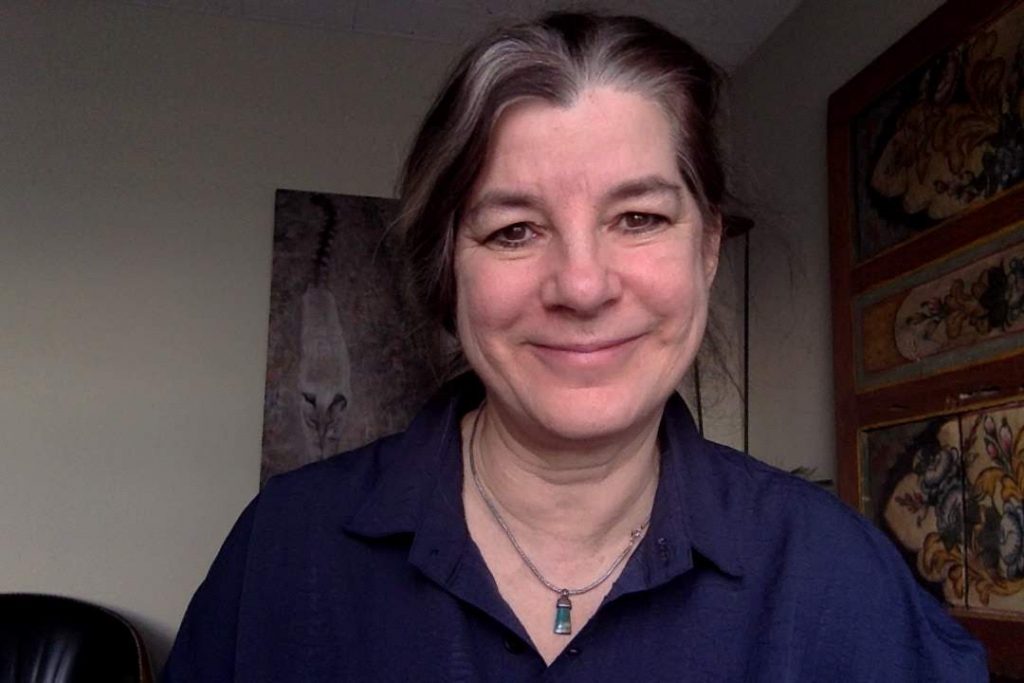
Photo: Inside Graceland Cemetery on Chicago’s North Side.
Chicago’s Tree Canopy Needs Nurturing
We must save our mature trees
By Karen Daiter | November 14, 2021
Editor’s Note: Ald. Andre Vasquez, Jr., (40th) introduced a resolution in the Chicago City Council that calls for the Department of Streets and Sanitation to reinstate the treatment of the city’s remaining parkway ash trees, which number close to 50,000. A total of 42 alderpersons supported the resolution, according to Vasquez.
In June, the City Council established the Urban Forestry Advisory Board to mediate these types of disputes but Mayor Lightfoot has not yet announced appointments to the board.
This article, in support of the resolution, is adapted from testimony submitted to the City Council by Tree Team Chair Karen Daiter.
Our urban forest faces multiple threats from climate change, which is why we must do everything we can to save our mature trees — and that includes ash trees, historically 17% of parkway trees and 10% of Chicago’s tree canopy.
While the emerald ash borer has killed millions of ash trees, since 2010 arborists have had a cost effective way to inoculate the trees, which comprise some of our oldest trees. The cost of inoculating a tree is one-tenth the cost of removing a dead tree.
Older trees provide multiple public benefits, according to the Morton Arboretum.
These include:
- Improved air quality
- Carbon sequestration
- Reduction of carbon emissions
- Removal of air pollutants
- Reduction of heat islands and
- Water retention and flood management
While planting new trees is important, they can’t replace the benefits of older trees — because it takes at least 10 years for trees to produce significant benefits, and many young trees don’t survive.
For every 100 trees planted, only 50 survive
For every 100 trees planted, only 50 survive over 13 years, making the replacement of established trees complicated. Young trees need to be planted in the right place and have three years of care to ensure their survival. This care must be built into forestry’s replanting budget.
Our tree canopy is also a social equity issue. Lower income areas of cities have at least 25% less tree cover than their wealthier counterparts. Tree canopy impacts people’s health, and fewer trees compound social inequities.
Mature trees can lower heating and cooling costs, as well as enhance some property values, according to the research. In addition, cities with dense tree cover tend to have stronger communities and an improved sense of social capital.
Trees provide significant health benefits for residents, including improved mental health, increased attention span and the reduction of stress. Exposure to trees can boost one’s immune system, lower blood pressure, improve mood and reduce recovery time from illness or surgeries.
American Forests says cities should aspire to a 40% tree canopy to provide these benefits. Using their ratings, Chicago has an 11% green infrastructure.
Our 2020 Chicago Tree Census shows the number of trees in Chicago is decreasing. The poorer areas of our city already have 25% less tree cover, and a significant part of this cover is ash trees. Losing these trees will have a disproportionate impact in these areas, due to their already reduced tree cover.
If passed and put into practice, the resolution would direct Streets and San to develop a system with a two-pronged approach that includes regular inoculation and the removal of any dying ash trees.
We need to think closely about how we invest in critical aspects of our urban infrastructure. Retaining our ash trees makes sense fiscally and in terms of equity, health and climate change.
Mayor Lori Lightfoot announces a new tree planting plan
Earlier this month, Lightfoot announced a plan to spend $46 million out of a $188 million environmental justice budget on planting and maintaining 75,000 trees over the next five years.
“Our new tree planting strategy is part of our effort to fight the climate crisis,” Lightfoot said in a statement. “Delivering on bold, equitable climate goals is critical for our city to continue to thrive. These investments will directly benefit our residents in neighborhoods disproportionately impacted by the effects of climate change and help address decades of disinvestment.”
Saving our ash trees could only bolster the mayor’s goals for social equity and addressing the climate crisis.
Next steps: How you can help
Ald. Vasquez suggests we contact our alderpersons and the mayor’s office to urge them to reinstate the inoculation of our mature ash trees. To contact the mayor, send an email to letterforthemayor@cityofchicago.org.
Added Vasquez: “Thank you to so many groups like the Save Your Ash Coalition, North River Commission and so many neighbors that are engaged on this!”

Karen Daiter is a Chicago psychotherapist, who works with children and adults. She joined Climate Reality Chicago Metro in 2020 and recently became chair of the Tree Team. Karen has always had a love of trees and is passionate about protecting the environment.
FURTHER READING
On Ash Trees
• Save Your Ash Coalition Chicago
• Save Chicago’s Healthy Ash Trees
The Value of the Urban Forest
• Morton Arboretum: The Role of Our Urban Forest in the Chicago Metropolitan Region’s Future (October 2010)
• Using Trees and Vegetation to Reduce Heat Islands
• Investments vs. Returns for Healthy Urban Trees: Lifecycle Cost Analysis
Trees can enhance property values
• How Trees Increase Property Values
• The Value of Street Trees
• City Trees and Property Values
The state of our tree canopy / equity issues
• 2020 Chicago Region Tree Census
• Is Average Tree Lifespan a Meaningful Number
• Find your score and help create tree equity in cities and towns across America
• Tree Cover Percentage: How Does Your City Measure Up?
• The World needs more trees: Chicago and Illinois must Help
• Since When Have Trees Existed Only for Rich Americans
The health benefits of trees
• Trees are Life-Saving Infrastructure
• Immerse Yourself in a Forest for Better Health
• The Many Health Benefits of Trees
• Social Life Under Cover: Tree Canopy and Social Capital in Baltimore, Maryland

